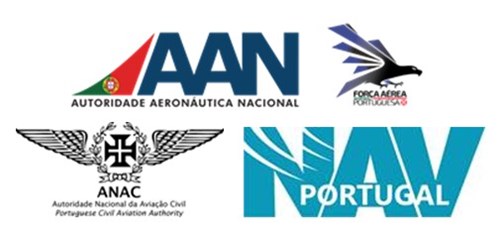Agreements between NAV and the Air Force ensure enhanced capacity
Project to increase Lisbon airport capacity up to 72 movements per hour

INFANAV, the body responsible for the strategic airspace management, approved on 23 October the project for the reorganisation of airspace at Lisbon Air Terminal (ATL). The project was prepared by the Airspace Working Group (GTEA) as determined by Paragraph 1 of Cabinet Resolution 94/2019.
This project anticipates the reorganisation and conciliation of civil and military use of airspace in the Lisbon region and its approval means the conditions are now in place to gradually increase the capacity of ATL up to 72 movements per hour.
According to the GTEA, the combination of terms set out in the Letter of Operation between the Air Force and NAV Portugal signed on 28 June 2019, which provides for the transfer of Sintra airspace, with the terms already agreed for the future Letter of Operation between the same bodies but regarding the partial transfer of Monte Real airspace, ensures the conditions necessary to proceed with the gradual increase of Lisbon’s airport system capacity to 72 movements per hour – compared to the current 44.
The terms of these agreements between the Air Force and NAV foresee ceding Sintra airspace from April 2020 and the partial ceding of Monte Real airspace from the IATA Summer 2021. In the case of Sintra, the goal is to make the Point Merge System* viable from April 2020.
These agreements redefine the vertical and lateral boundaries of airspace under military jurisdiction, as well as the vertical limits of ATL in order to allow also new procedures for the Cascais aerodrome. These agreements were designed ensuring also that all missions required by the Air Force to ensure its readiness are executed.
The ongoing operational reorganisation of airspace will increase the airport capacity of Lisbon and offer a more efficient airspace structure, enabling better traffic management on the approach to Lisbon and, thereby, reducing delays and total greenhouse gas emissions associated with air transport.
The GTEA was established by decision of the Agency for the Coordination of Airspace Management and Use (OCEA), and includes representatives of the National
Aeronautical Authority (AAN), the National Civil Aviation Authority (ANAC), the Portuguese Air Force and NAV Portugal. This working group reviewed airspace operations and submitted proposals to adapt, match and optimise it in order to increase the efficiency of civil-military coordination, which resulted in the project that has now been approved.
The approval of the project as determined by Paragraph 1 of Cabinet Resolution 94/2019 represents the full completion of the tasks attributed to the GTEA which should, however, meet again as soon as the processes for the reorganisation of the Air Force resources and the implementation of the complementary Lisbon airport go ahead.





.png)



.jpg)
Comments
There are no comments yet for this item
Join the discussion